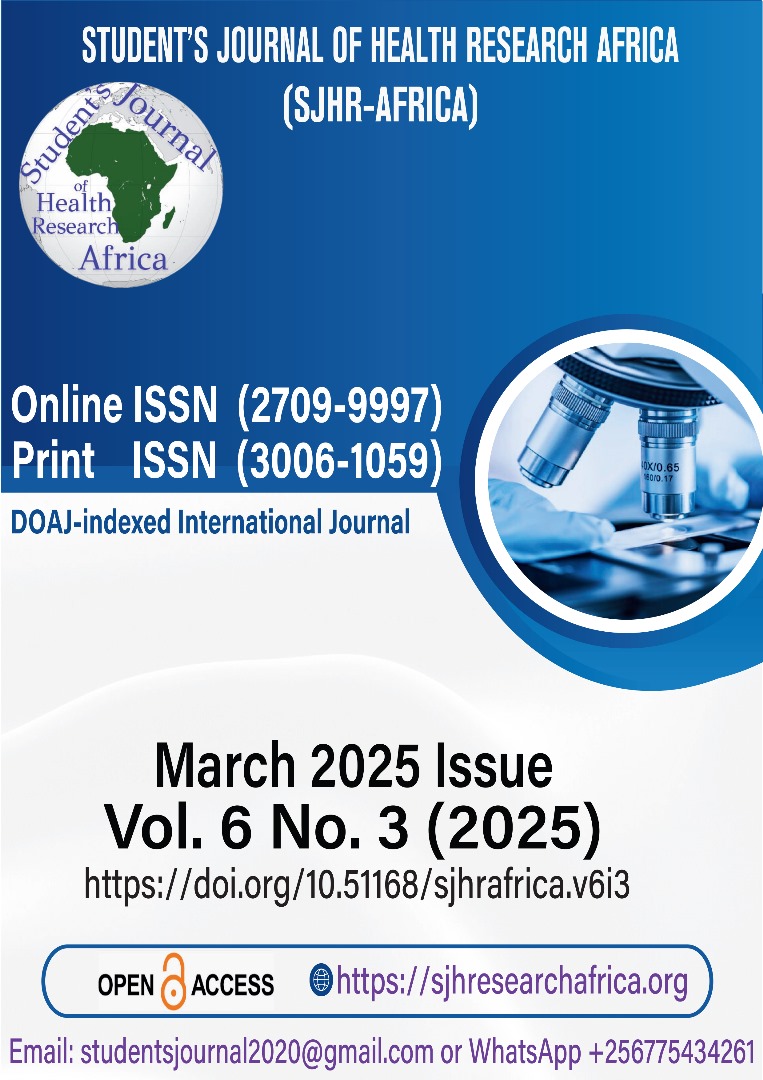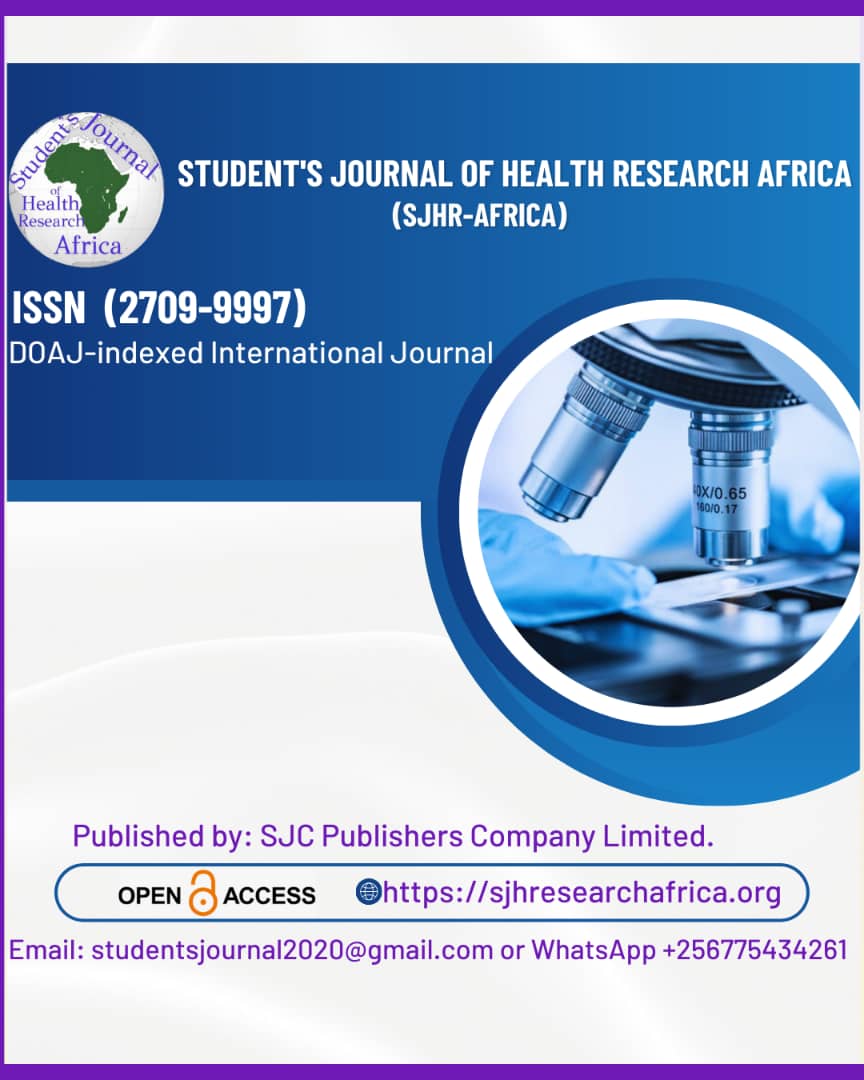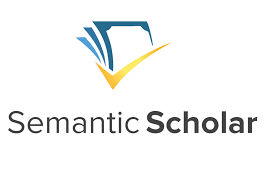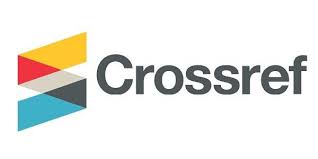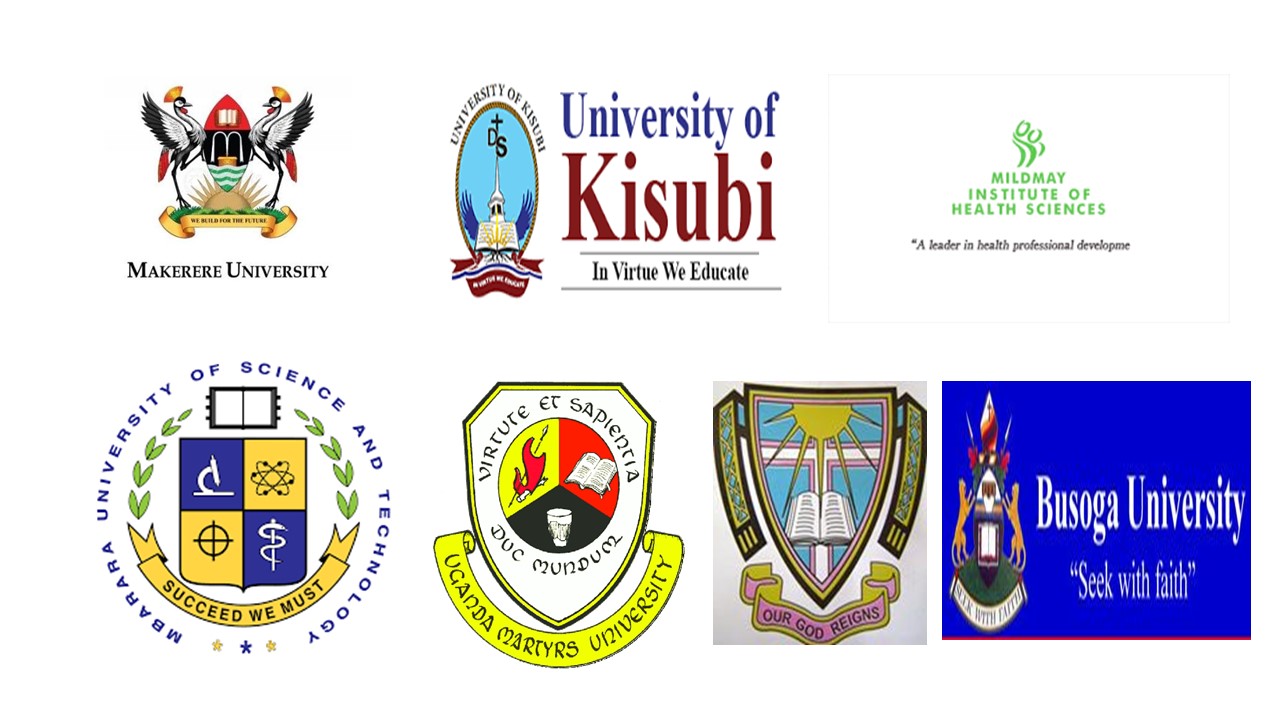BURN INJURY TREATMENT OUTCOMES RELATED TO SEVERITY AND FIRST AID RESPONSE.
DOI:
https://doi.org/10.51168/sjhrafrica.v6i3.1670Keywords:
Burn injuries, initial treatment, survival outcomes, long-term complications, professional medical care,, mortality, first aidAbstract
Background
Burn injuries are a significant global health issue, with high morbidity and mortality, particularly in low- and middle-income countries. Early first aid intervention and severity assessment play a crucial role in determining treatment outcomes and recovery. This study aims to evaluate burn injury treatment outcomes about severity and the effectiveness of first aid interventions.
Methods
This hospital-based, prospective observational study was conducted at the Rajendra Institute of Medical Sciences (RIMS), Ranchi, from November 2021 to October 2022, involving a minimum of 100 patients with acute burn injuries. Data were collected on patient demographics, burn severity (TBSA), clinical parameters, and treatment outcomes. Laboratory investigations and monitoring were performed to assess prognosis and the impact of first aid response on recovery.
Results
The socio-demographic data revealed that the majority of patients were young adults, with an average age of 34.3 ± 13.1 years, and a higher proportion of male patients (70%) compared to females (30%). Among the 66 burn survivors, complications were strongly linked to initial treatment. Patients receiving professional medical care had the best outcomes, with 57.69% experiencing no complications and only 7.69% developing severe complications. Patients with first-aid-only injuries had higher complication rates, with 50% developing mild complications and 25% experiencing severe complications. All survivors in the no-treatment group (100%) had severe complications, emphasizing the critical role of professional medical intervention (p < 0.001).
Conclusion
Early professional medical care significantly improves survival and reduces long-term complications in burn patients. Delayed or inadequate treatment leads to higher mortality and severe complications, highlighting the need for timely medical intervention.
Recommendation
It is recommended that timely and professional medical care be prioritized for burn patients to improve survival rates and minimize long-term complications.
References
World Health Organization (WHO): Global burden of disease : 2004 summary tables. WHO, Geneva.
World Health Organization: Fact sheet No. 365; May, 2012.Available from: http:// www.who. int/ media- centre/factsheets/fs365/en.
Akther JM, Nerker NE, Reddy PS, Khan MI, Chauhan MK, Shahapurkar VV. Epidemiology of Burned patients admitted in burn unit of a rural tertiary teaching hospital. Pravara Med Rev 2010; 2:11- 07 .
Hanumadass ML. Some thoughts on organization of delivery of burn care in India. Indian J Burns 2003;11:18-20
Bailey’s & Love’s. Short Practice of Surgery. 27th Edition. page 317.
Tobiasen J, Hiebert JH, Eldich RF (1982). Prediction of burn mortality. Surg Gynaecol Obstet 154(5):711-714.
Dahal P et al (2015). Baux and abbreviated burn severity score for the prediction of mortality in patients with acute burn injury. J Coll Med Sci Nepal 11(4):24-27
Osler T, Glance LG, Hosmer DW (2010) Simplified estimates of the probability of death after burn injuries: extending and updating the Baux score. J Trauma 68(3):690–697.
Regehr, C., & Bober, T. (2005). In the line of fire: Trauma in the emergency services. Oxford University Press.
Markenson, D., Ferguson, J. D., Chameides, L., Cassan, P., Chung, K. L., Epstein, J., ... & Singer, A. (2010). Part 17: first aid: 2010 American Heart Association and American Red Cross guidelines for first aid. Circulation, 122(18_suppl_3), S934-S946.
Pape, S., & Sollars, A. J. (2022). Management of severe burns. ABC of Major Trauma: Rescue, Resuscitation with Imaging, and Rehabilitation, 368.
Rowan, M. P., Cancio, L. C., Elster, E. A., Burmeister, D. M., Rose, L. F., Natesan, S., ... & Chung, K. K. (2015). Burn wound healing and treatment: review and advancements. Critical care, 19, 1-12.
Markiewicz-Gospodarek, A., Kozioł, M., Tobiasz, M., Baj, J., Radzikowska-Büchner, E., & Przekora, A. (2022). Burn wound healing: clinical complications, medical care, treatment, and dressing types: the current state of knowledge for clinical practice. International journal of environmental research and public health, 19(3), 1338.
Jeschke, M. G., Pinto, R., Kraft, R., Nathens, A. B., Finnerty, C. C., Gamelli, R. L., ... & Herndon, D. N. (2015). Morbidity and survival probability in burn patients in modern burn care. Critical care medicine, 43(4), 808-815.
Downloads
Published
How to Cite
Issue
Section
License
Copyright (c) 2025 Gagan Hembrom, Aman Buriuly,, Zenith Harsh Kerketta

This work is licensed under a Creative Commons Attribution-NonCommercial-NoDerivatives 4.0 International License.

